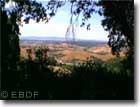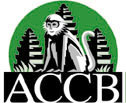Any environmental project can apply for the support
of the Earth Biodiversity Foundation (EBDF).
Our favorite donation candidates are environmental
projects (protected areas or potential
protected areas) with long-term focus. We like to invest our energy
and afford in projects that have enthusiasm for the project's goals.
We support projects around the world.
No matter where your project is located, we always
evaluate a new investment with the criteria outlined below. We consider
these critical to the success and sustainability of all environmental
projects, young and old, protected areas
or potential protected areas.
What you can expect
Initial involvement:
We do not want ownership or control of a project.
Post-acceptance participation
Our post-acceptance (after you project is qualified for our portfolio)
role can range from intensive involvement to a far more detached role
once the project is mature. In an early-stage project we tend to be
involved with key management decisions, major changes of strategic
direction, project positioning and financing. When the project's management
asks us to stay involved, we do. We provide assistance when requested
or needed. We do not want to run projects.
See also EBDF's support
What EBDF expects
Clarity:
One test we often apply to a new candidates is the ease with which
it can be explained. If someone is able to summarize his project's
description on the back of a business card, it usually means that he will
be able to describe its purpose to employees, natives and donors.
It suggests they truly understand their long-term goal.
Who needs your project?
We sometimes ask: "Who cares?" If you cannot describe who really needs your project, it presages trouble.
Need vs. want:
We also sometimes ask: "So what?" To succeed, projects need to pick
the one thing that is of burning importance to the people. The project management know the value of money and understand the difference between need and want. Their confidence is tempered by an understanding of their shortcomings.
Frugality:
Focus spending on what's critical. Why pay $5.00 per square foot
when just as much can get done in space rented for $2.50 per square
foot? This is not about being cheap - it's about setting an example
for people involved in the project. Adopt the paper clip as a symbol of frugality. There
is no need to purchase paperclips when your will receive them
for free when the mail arrives each day. Use this example to think
about all the other opportunities not to spend money.
Goals:
The environmental project must have at least one of the following goals:
|
|
|
 | |
Decrease poverty
|
 | |
Increase awareness for the importance of environmental issues as well as the relationship between environment and quality of life (especially health and poverty)
|
 | |
Educate people to understanding the importance and fascination of biodiversity and related education
|
 | |
Ensure environmental sustainability
|
 | |
Protect biodiversity in general and endangered species in particular
|
 | |
Protect and conserve forests, wetlands and other protected areas
|
 | |
Force new, future-oriented technologies (like solar energy)
|
How it works
Any environmental project can apply for a REP (Referred
Environmental Project) qualification. The application is formless.
Just send the description of your environmental project to EBDF (see
also the next paragraph: "Getting started"). EBDF will review the
description and by open questions will contact you. If your project
qualifies for REP then EBDF will inform you and will send you information
about the next steps.
REP-Projects get the support they need for a long
term sustainable financiability. it means that they get EBDF's two-side
financial support and support for establishing and developing an effective
management team.
EBDF organizes fundraising for single REP-Projects
as well as for a general EBDF fund. The donation of a single fundraising
goes to the single REP-Project and the donations for EBDF goes to
the REP-Projects in general. In this case the EBDF Board will decide
how the fund will be distributed to the REP-Projects.
EBDF support the REP-projects with management consulting.
It includes the traditional management consulting tasks like project
description and financial plan, strategic direction, team building,
buy-in process, etc. In addition EBDF provide for the REP-Project
management teams training and seminars.
See also the EBDF's structure
Getting started
1. Project description:
We like project descriptions that present a lot of information in as few
words as possible. The topics that interest us most are a description
of the need and the long- and short-term goals, information about
the situation of the country where the project is, an overview of
the project's initial and planned steps, a summary of the backgrounds
of the management team and a five year summary of financial projections.
We are very skeptical about detailed financial projections beyond
the first 12-18 months of a project's operations and have a jaundiced
view of reams of financial data.
We have found that the following format provides
a good overview of a prospective donations.
- Project background
- Project description and mission
- Background of the management team
- Financial plan
2. Submit the project description
Send to EBDF your project description or relevant project information. Please
do not forget to include your contact information! You can send your
request per email info(at)ebdf.org.
EBDF needs 2-3 weeks for review. During this time
you can contact EBDF at application(at)ebdf.org. EBDF organizes a meeting
or a conference call with you, so we can discuss the decision and
the next steps.









